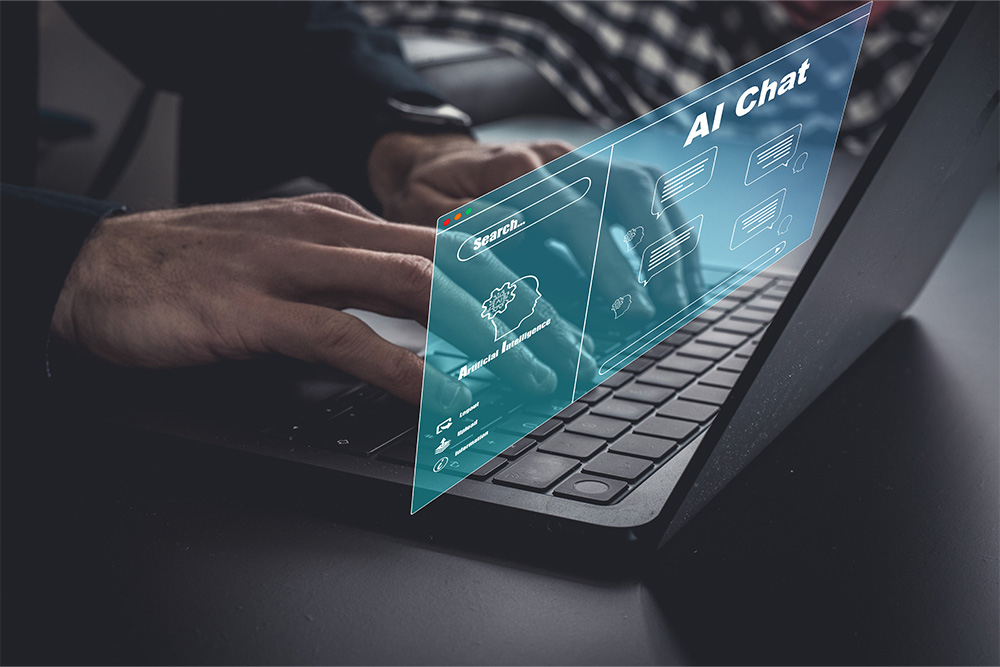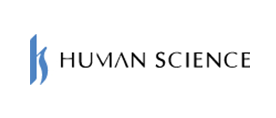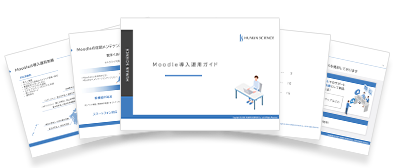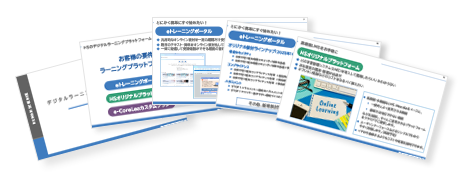2024.12.05
Utilization of ChatGPT in Educational Institutions such as Universities! - Introducing Examples, Benefits, and Points to Note

1. Examples of ChatGPT Utilization in Universities

ChatGPT is a conversational program that uses artificial intelligence (AI). It can answer questions and engage in conversations in a natural way, just like a human. For example, it can help with homework, provide explanations for things you don't understand, or enjoy casual chats. It is a very convenient tool that is useful in various situations. Its use is expanding in educational settings, and here we will introduce examples of ChatGPT's application in universities.
●ICT Help Desk Chatbot Equipped with ChatGPT
Musashino University started offering a scenario-based chatbot called "MUSIC Help Desk" in October 2019, which does not use AI. This has provided support 24 hours a day, 365 days a year. In July 2023, an ICT help desk chatbot equipped with generative AI was introduced.
By incorporating generative AI, it is now possible to have more natural and advanced conversations compared to previous chatbots, which is expected to enhance user convenience. The generative AI utilizes Microsoft's "Azure OpenAI Service." Consideration has been given to security measures and the protection of user privacy. In the future, it is anticipated that personalized information will be provided using conversation history and accumulated personal data between users and AI.
●Introduce ChatGPT bot to Slack for answering questions related to programming and more
This is a case where a ChatGPT chatbot was introduced to Slack in the Department of Information Engineering at Osaka University of Economics and Law.
Originally, Slack was used as a communication tool among students in the Department of Information Engineering. By introducing a chatbot based on ChatGPT, developed by OpenAI and built on GPT-4, it has become possible to provide quick and thorough answers to questions related to programming and information engineering. The response from students after the introduction has been positive, with comments such as, "Using the ChatGPT bot allows me to get answers to my questions immediately, making my learning progress smoothly."
●Learning tool that combines machine translation and ChatGPT in English classes
Ritsumeikan University has initiated a trial introduction of the English learning tool "Transable," which combines ChatGPT and machine translation, in the spring of 2023.
This provides information with English guidance from ChatGPT added to the results output by existing opportunity translations. ChatGPT suggests appropriate English sentences for the Japanese text that users want to translate, and not only that, it also explains the reasons why the sentences are deemed appropriate. By incorporating this into English learning, the goal is to enable students to actively acquire English skills that can be used in society.
●Report writing for administrative staff, press releases, and news articles
The initiative at Tohoku University involves the introduction of ChatGPT to promote the advancement and efficiency of operations. Two examples of its use are explained.
・Utilization in System Operations
This involves creating RPA flows for managing and operating the computers used by staff while interacting with ChatGPT. This aims to automate the management and operation tasks of the system.
・Utilization in Public Relations Activities
Based on the press releases issued by our university, we are using ChatGPT to create news articles, and by having an AI narrator read them, we are producing new audio and video media. Additionally, we are utilizing ChatGPT to create catchphrases for promoting our university's events. ChatGPT is also used in part for the creation of this press release.
We introduced examples of ChatGPT usage at four universities, but there are many other initiatives being undertaken. Additionally, the performance of ChatGPT has improved dramatically over the past year, further expanding its range of applications. We will introduce new usage examples on another occasion.
2. Benefits of Using ChatGPT in Universities

There are many benefits to utilizing ChatGPT in educational settings. Although this refers to universities, it is not limited to just universities, and I have summarized the advantages of its use.
●Benefits for Faculty and Staff
・You can reduce the burden by streamlining operations
You can utilize ChatGPT for lesson preparation, various event preparations, and various administrative tasks. For example, you can have ChatGPT generate the desired text and use it as a "draft" to complete what you want to create. It is much easier and faster to progress with the work when you have a "draft" than starting from scratch.
・You can improve the quality of education
By streamlining operations, you will be able to use the time saved for more creative tasks. Instead of administrative work, you will have time to focus on preparing the content of the lessons, which can be expected to enhance the quality of education.
●Benefits for Students
・Enhancing Learning Efficiency
ChatGPT supports students' self-directed learning, helping to deepen individual understanding and resolve questions. For example, even when understanding is difficult with just textbooks, students can enhance their comprehension through dialogue with ChatGPT. Additionally, when questions arise, students can ask ChatGPT about topics not covered in textbooks and get immediate answers. In this way, students can utilize ChatGPT to improve the quality and efficiency of their learning.
・Improvement of Information Utilization Skills
Currently, "Information I" (programming education) is a required subject in high schools. It is very important for students to understand and utilize programming skills. Similarly, providing students with the opportunity to learn and utilize cutting-edge technologies like ChatGPT will help enhance those skills.
・Improvement of Learning Motivation
In traditional classes, the teacher primarily provided information in a one-way manner, and students were expected to understand and memorize it. However, the way of learning using ChatGPT is different. Students learn from ChatGPT to understand the given topic. They ask ChatGPT questions about things they are curious about and learn by receiving answers. By repeating this process, they can gain a deep understanding of the assigned topic. Moreover, ChatGPT never shows annoyance, no matter how many times you ask the same thing! Through dialogue with ChatGPT, students can learn at their own pace, focusing on what they do not understand, making learning enjoyable and engaging.
3. Points to Consider When Using ChatGPT in Universities

There are several points to consider when utilizing ChatGPT, but here we will focus on the points relevant to universities.
●Check the Ministry of Education, Culture, Sports, Science and Technology's Generative AI Guidelines
Many universities are establishing rules on how to use AI. It is important to review the rules for using AI according to the circumstances of each school. The Ministry of Education, Culture, Sports, Science and Technology has compiled examples and points to consider regarding the use of AI for universities and technical colleges to reference.
In this guideline, there were particularly underlined parts, so we would like to introduce the sections that include them here.
"Regarding the handling of generative AI in the educational aspects at universities and technical colleges, it is important for each university and technical college to consider responses based on the actual educational practices being conducted. It is desirable to appropriately provide guidelines, etc., to students and faculty. At that time, it is expected that rapid advancements in generative AI will continue, and the impact on educational aspects may change, so it is important to strive for continuous situational awareness and to review responses as necessary based on technological advancements and the operational status of guidelines, etc."
In summary, the key points are as follows:
・It is important to consider the handling of generative AI according to the actual conditions of each educational setting.
・It is desirable to provide appropriate guidelines for students and faculty.
・As generative AI continues to advance rapidly, its impact on education may also change, so it is crucial to always stay informed and review responses based on technological developments and the implementation of guidelines.
Please refer to the Ministry of Education, Culture, Sports, Science and Technology's guidelines on generative AI for utilizing ChatGPT.
●Educate and implement measures to mitigate the risk of leakage of personal and confidential information
・Risk of Leakage of Personal and Confidential Information
In the free version of ChatGPT and ChatGPT Plus, the data and conversation content you input are used for training OpenAI's AI models. Therefore, if you input personal or confidential information, there is a possibility that this information could be used by others when they use ChatGPT. As a result, there is a risk of important information being leaked. In fact, it was reported that three pieces of confidential information were leaked due to an employee using ChatGPT at Samsung Electronics in South Korea.
Thus, it is important to create guidelines to avoid inputting personal and confidential information when using ChatGPT. It is also necessary to take measures (such as opting out) to ensure that the data and conversation content you input are not learned by the AI model.
・Risk of Hallucination
Hallucination refers to the phenomenon where generative AI produces information that is different from the facts or information that does not actually exist in response to user queries. In Japanese, it is translated as "hallucination," as it seems as if the AI is experiencing a "hallucination" by outputting plausible falsehoods. ChatGPT is a smart and convenient AI, but it does not always provide correct information, so it is necessary for humans to verify and check whether the information from ChatGPT is accurate instead of believing it outright.
Additionally, although it is different from hallucination, humans tend to believe the first answer given. Therefore, when asking ChatGPT, you can avoid this issue by requesting multiple (for example, three) suggestions instead of just one, creating an opportunity to choose from among them.
●Prevent the decline of students' thinking skills
When students use ChatGPT, they worry about relying entirely on it for their homework and reports without researching or thinking for themselves. While assignments can help develop students' critical thinking and writing skills, if they leave everything to ChatGPT, they may miss opportunities to cultivate those skills. Balance is essential in the use of AI. If used appropriately, it can enhance thinking skills, but excessive dependence can have the opposite effect. Therefore, it is advisable to discuss with students in advance how to use ChatGPT for the assignments given to them.
4. Summary
The performance of ChatGPT is growing far beyond our expectations. At a certain AI seminar, this growth was described as a two-dimensional curve. The areas of application are expanding, and the ways to utilize it are becoming deeper. Let's make sure to master generative AI as a useful tool. We have introduced some features of Open AI available on Moodle in our seminars several times, and convenient features using generative AI are also increasing on Moodle. We will introduce them in future blogs. If you are interested, please feel free to contact Human Science Co., Ltd.
>Moodle Implementation Support and Operation
>e-Learning Material Production
>e-Learning Material Translation (Multilingual Support, Localization)
Moodle Related Information
- 2025.10.29
- [Moodle Manual ⑤] 2025 Edition|Support Staff Explain How to Set Up and Utilize Groups/Groupings!
- 2025.10.28
- Can You Obtain Qualifications Through e-Learning? Examples of Qualifications and Their Benefits













